#Antrostomus vociferus
Text
BOTD: Eastern Whip-poor-will

Photo: Paul Cools
"Often heard but seldom observed, the Whip-poor-will chants its name on summer nights in eastern woods. The song may seem to go on endlessly; a patient observer once counted 1,088 whip-poor-wills given rapidly without a break. By day, the bird sleeps on the forest floor, or on a horizontal log or branch. This bird and the Mexican Whip-poor-will of the southwest were considered to belong to the same species until recently."
- Audubon Field Guide
#birds#eastern whip poor will#whip poor will#birds of north america#north american birds#nightjar#nightjars#birds of america#american birds#bird#bird watching#birdblr#birblr#birds of the us#birds of mexico#birds of canada#birds of central america#Antrostomus vociferus
35 notes
·
View notes
Photo

Eastern Whip-poor-will
27 notes
·
View notes
Note
Sounds like the finger situation sucks, so here are some funny looking birds to cheer you up.
Common nighthawk (Chordeiles minor)
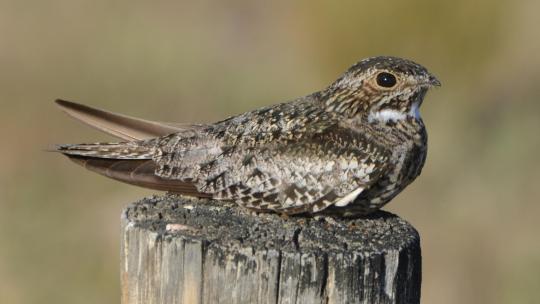
Eastern whip-poor-will (Antrostomus vociferus)

Frogmouth (Podargus strigoides)
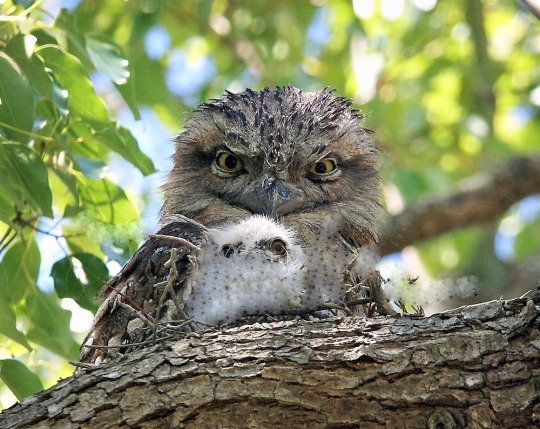
Common potoo (Nyctibius griseus)

Oh those are some creatures!!!! They’re all so neat looking, thank you for showing me them :D
That third one looks kinda like a cat XD
10 notes
·
View notes
Text
Los nombres de aves de Estados Unidos dejarán de ser epónimos
Al chotacabras (Antrostomus vociferus) se le denomina en Estados Unidos “whip-poor-will”, que podría traducirse por “látigo de mala voluntad”. Al parecer, los ingleses que colonizaron Estados Unidos lo nombraron así por su canto repetitivo que a los humanos les sonaba como whip poor Will, whip poor Will, whip poor Will! (¡azota al pobre Will, azota al pobre Will, azota al pobre Will!). A partir…

View On WordPress
0 notes
Photo

Eastern whip-poor-will (Antrostomus vociferus)
#antrostomus vociferus#Eastern whip-poor-will#whip-poor-will#whippoorwill#nightjar#goatsucker#bird#bugeater#illustration#art#design#graphic#vector#logo#graphic bird#bird art#bird illustration#bird artist#wildlife#maine#new england#migratory#jada fitch
240 notes
·
View notes
Photo

Day 226, the eastern whip-poor-will! I drew one of these way back on day 8, and while I love these guys, they’re a bit too much of a challenge to draw more than once every 218 days.
Send in requests for more!
project tag | commissions | buy me a coffee!
161 notes
·
View notes
Photo
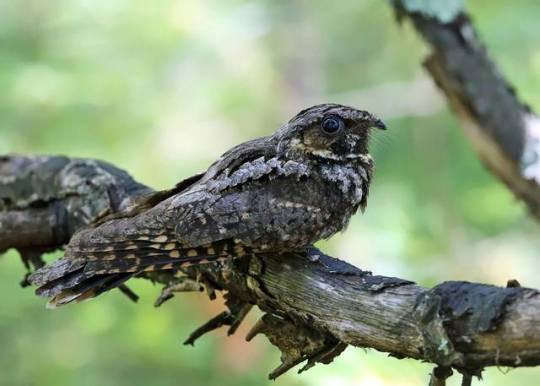
Eastern Whip-poor-will (Antrostomus vociferus), Dunstable, MA, USA
You’re more likely to hear an eastern whip-poor-will, with its distinctive WHIP-POOR-WILL call, than to see one. In the summer months, they’re most active about 30 minutes after sunset, while they feed on moths, beetles and other insects.
photograph by Tom Murray | Flickr CC
via: U.S. Fish and Wildlife Service Midwest Region
47 notes
·
View notes
Photo

Eastern Whip-poor-will (Antrostomus vociferus) - photo by Mary Ann Teal
268 notes
·
View notes
Photo
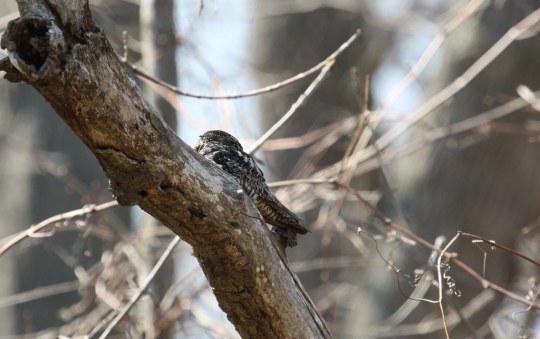
Today is #FairyTaleTuesday on Twitter and the theme is birds. Here's a fun little piece of Rhode Island folklore (and a peek into my more personal magical practices):
Narragansett residents believed that the whip-poor-will (Antrostomus vociferus) was a harbinger of death.
“Thomas Hazard once asked a Quaker lady who lived on Rhode Island if she had ever heard a whip-poor-will. ‘Never but twice,’ she replied, ‘once on the night that my father died, and again on the night preceding the day on which I lost my mother.’”
Hazard, Recollections of Old Times, 30
Do you have a piece of local bird folklore?
#fairytaletuesday#birds#folklore#rhode island#ri folklore#bird folklore#whip-poor-will#new england folk magic
0 notes
Photo

Inktober Day 7, “Shy”
The eastern whip-poor-will (Antrostomus vociferus) is an exceptionally shy bird which is more often heard than seen.
107 notes
·
View notes
Photo

Ontario Species at Risk for March 2, 2019 is the Eastern Whip-poor-will (Antrostomus vociferus)
Status: Threatened
What it looks like
The Eastern Whip-poor-will is a medium-sized bird 22 to 26 centimetres long with mottled brown and grey feathers that help it blend in with its surroundings. Since it becomes active at dusk and rests during the day, it is more commonly heard than seen.
Eastern Whip-poor-wills are most vocal during bright, moonlit nights when they can be heard singing their name "Whip-poor-will" often in long, seemingly endless series.
Where it lives
The Eastern Whip-poor-will is usually found in areas with a mix of open and forested areas, such as savannahs, open woodlands or openings in more mature, deciduous, coniferous and mixed forests.
It forages in these open areas and uses forested areas for roosting (resting and sleeping) and nesting.
It lays its eggs directly on the forest floor, where its colouring means it will easily remain undetected by visual predators.
Where it’s been found in Ontario
The Eastern Whip-poor-will's breeding range includes two widely separate areas. It breeds throughout much of eastern North America, reaching as far north as southern Canada and also from the southwest United States to Honduras.
In Canada, the Whip-poor-will can be found from east-central Saskatchewan to central Nova Scotia and in Ontario they breed as far north as the shore of Lake Superior.
Although Eastern Whip-poor-wills were once widespread throughout the central Great Lakes region of Ontario, their distribution in this area is now fragmented. The Whip-poor-will migrates to Mexico and Central America, where it stays throughout the cold Canadian winter.
What threatens it
Although there is some uncertainty surrounding the decline of the Eastern Whip-poor-will, the main threat to the species is likely habitat loss and degradation.
The habitat loss is a result of natural changes when open fields and thickets become closed forest in the north, and intensive agriculture in the south.
Additional threats include car mortalities and changes in food supply related to pesticides. Nest predators, including feral cats, are likely a threat in the highly populated southwest part of the province.
Source: https://www.ontario.ca/page/eastern-whip-poor-will
Photo Credit: Tom Murray
0 notes
Text
Bird-a-thon 2017 Recap
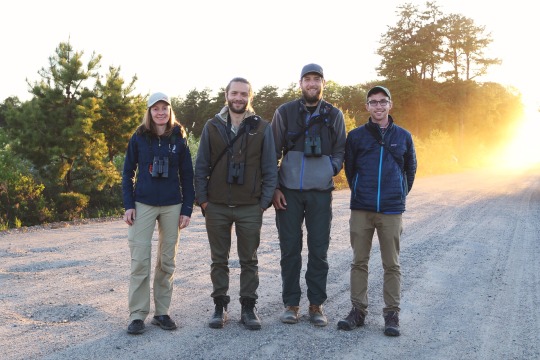
We few, we happy few, we band of birders.
On the 20th, I had the pleasure of spending 22 hours on the road with the Maine Audubon, completing the biggest “big day” of my life so far. Our team was “The Kylo Wrens” because birding+sleep deprivation=Star Wars-themed bird puns. We identified 146 species of birds, beating the other team by 9 species.
My plans of keeping detailed notes throughout the day were thwarted by the simple task of keep our species count list updated, so the minute details of the day are lost to time. Here’s a quick recap of what I can remember though.
Starting off at 12:00am standing less than three feet from a loudly clacking King Rail that despite our best efforts (and Seth’s night vision goggles) we weren’t able to actually spot. We literally witnessed the grass moving as the rail picked it’s way through, yet weren’t able to spot a single feather of the bird itself. Rails are cool.
Dipping on an Eastern Screech Owl and being mystified by some dubious mammal screeching in the distance.
Gas station Woodcock peent in Farmington.
The boreal forest along Boy Scout Rd in Rangely is cold at dawn. It’s also filled with some great warblers too.
Lena is extremely good at mimicking bird calls.
Seth spotted the same Barred Owl twice, two hours apart, but none of us managed to see it either time.
Day’s Store in Belgrade is one of the best general stores in the history of mankind. It’s got everything.
Never being more excited to be looking at a sandpit than when I discovered there could be Bank Swallows nesting in them.
Sleepy raccoon in the trees at Capisic Pond Park in Portland.
Quick detour when Doug thinks he spotted a White-winged Dove. Our schedule prevents us from picking apart every bush in the nearby area.
Literally hundreds of feeding terns and flying scoters along the rocks at Biddeford Pool, all lit up brilliantly by the setting sun.
Dipping on a Mute Swan but coming up with a Pacific Loon instead.
18 hours in and no one’s seen a damn Hairy Woodpecker.
The almost inaudible chirping of Grasshopper Sparrows at Kennebunk Plains.
Ending the day talking birding stories and eating homemade guac while listening to Whip-poor-wills calling all around us.
Finally turning up two hooting Barred Owls and deciding to call it a night.
For those of you who are just really into lists, here’s one of all the Life List species that this novice birder ticked off on the trip (in reverse order):
Eastern Whip-poor-will - Antrostomus vociferus
Upland Sandpiper - Bartramia longicauda
Grasshopper Sparrow - Ammodramus savannarum
Vesper Sparrow - Pooecetes gramineus
Eastern Meadowlark - Sturnella magna
Pacific Loon - Gavia pacifica
Roseate Tern - Sterna dougallii
Red Knot - Calidris canutus
Short-billed Dowitcher - Limnodromus griseus
Willow Flycatcher - Empidonax traillii
Black Tern - Chlidonias niger
Bank Swallow - Riparia riparia
Tennessee Warbler - Oreothlypis peregrina
King Rail - Rallus elegans
It was an eye-opening trip for me and a privilege to spend time with such great birders. Thanks for everything Doug, Lena, and Seth. I have gained an appreciation for how learning habitat is the gateway to more productive birding. Hopefully I can use that down the road.

1 note
·
View note
Video
Eastern Whi-poor-will. by Ric McArthur
Via Flickr:
Sitting on a small branch behind a wall of twigs. Lots of people had an opportunity to view a bird that is more often heard than seen. Antrostomus vociferus Eastern Whip-poor-wills lay their eggs in phase with the lunar cycle, so that they hatch on average 10 days before a full moon. When the moon is near full, the adults can forage the entire night and capture large quantities of insects to feed to their nestlings. source - Cornell Lab of Ornithology.
0 notes
Photo
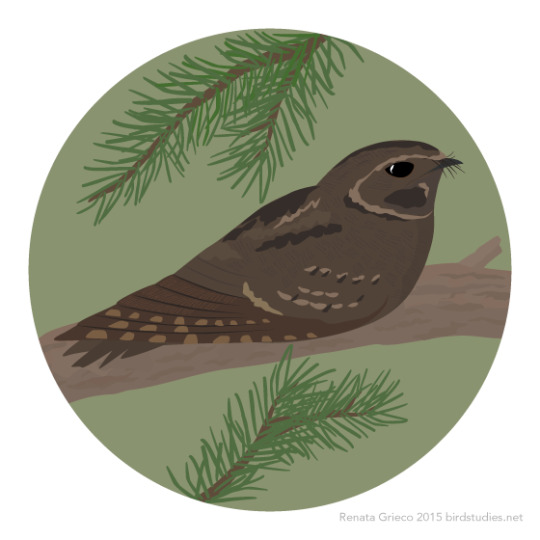
August 14, 2015 - Eastern Whip-poor-will (Antrostomus vociferus)
Requested by: geiszlerandgaila
These nightjars spend their summers in the eastern United States and some of southern Canada and their winters along the southeastern coast of the United States, eastern Mexico, and much of Central America. They are nocturnal, hunting insects mostly from perches on moonlit nights and at dawn and dusk. Rather than building nests, females lay their eggs directly onto the leaf litter, or sometimes on bare ground. Following the lunar cycle, they time their egg laying so the chicks will hatch about 10 days before the full moon. The extra light from a near full moon allows them to catch more insects for the new chicks. These birds are named for their recognizable calls, which sound like “whip-poor-will” and are frequently heard during spring and summer in forests of the eastern US.
#eastern whip-poor-will#whippoorwill#antrostomus vociferus#nightjar#bird#birds#illlustration#art#woodland#requests#geiszlerandgaila
102 notes
·
View notes